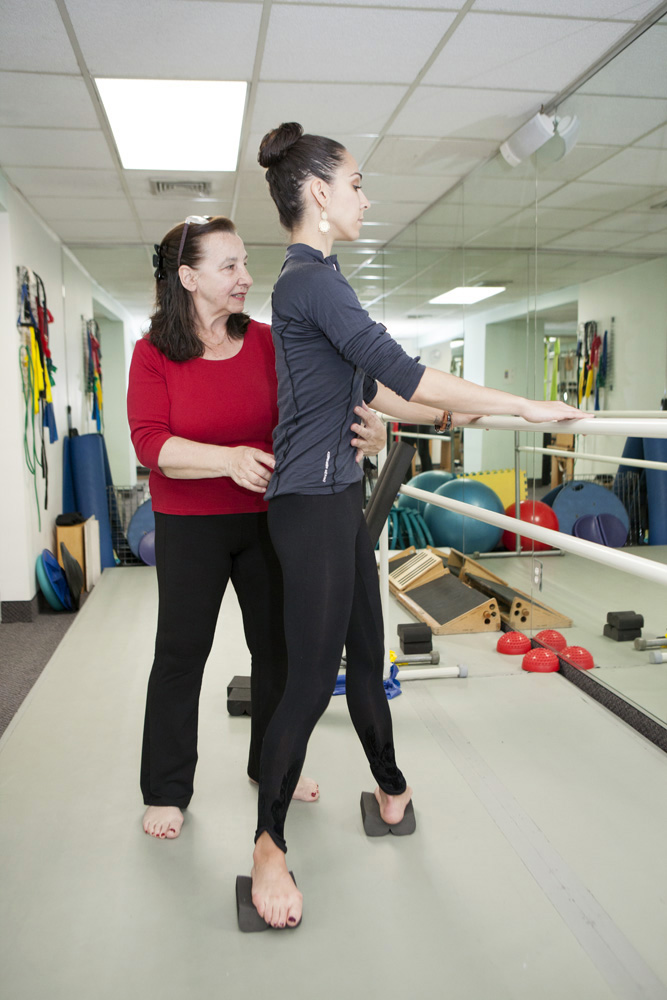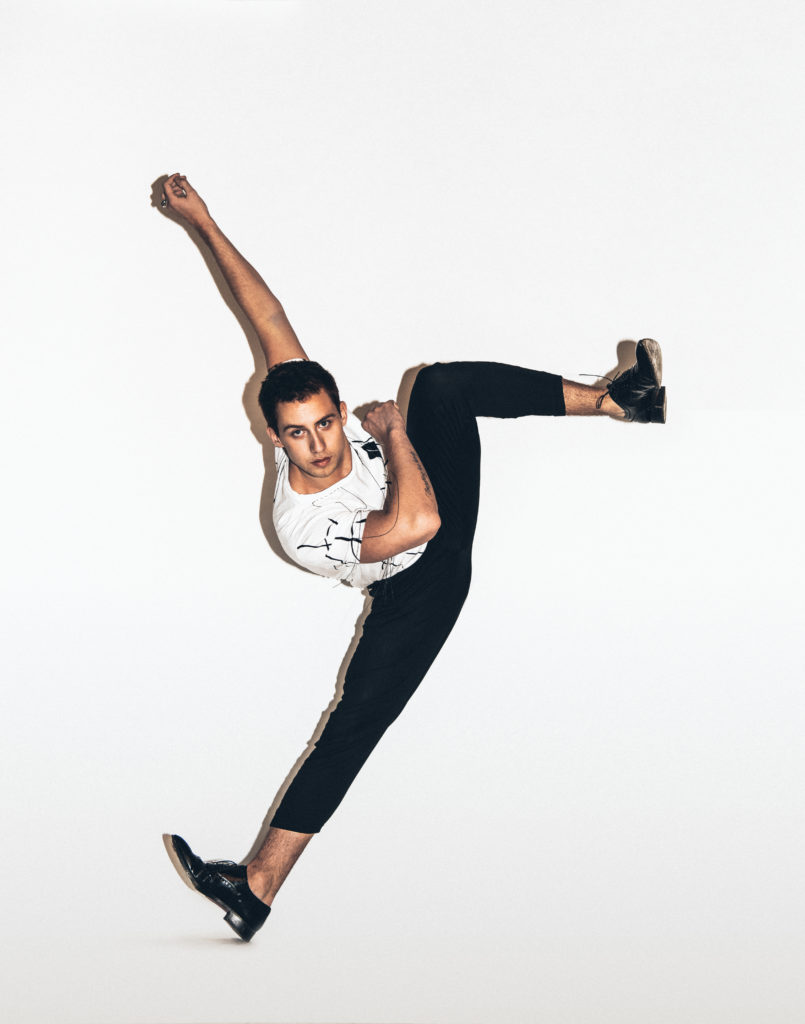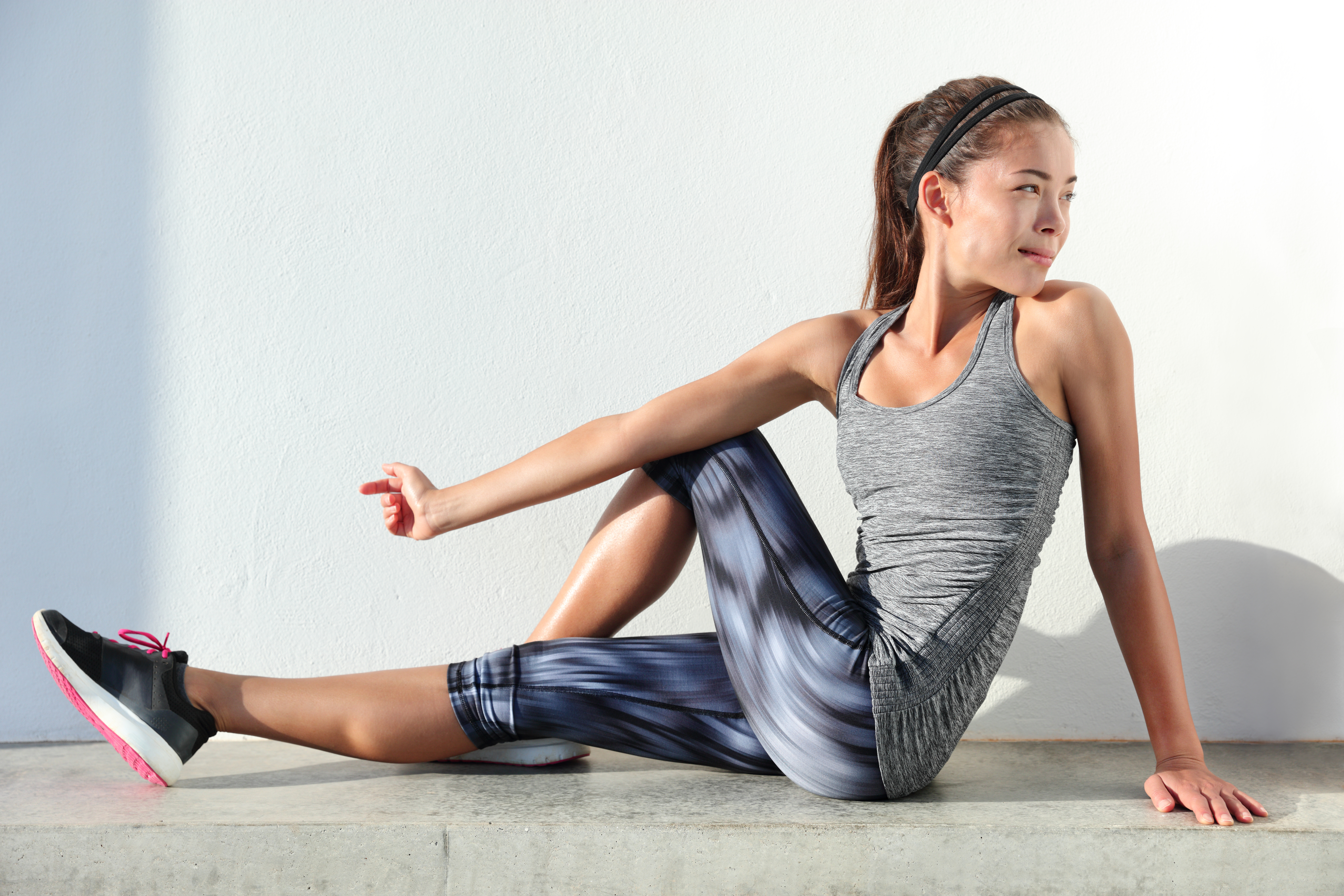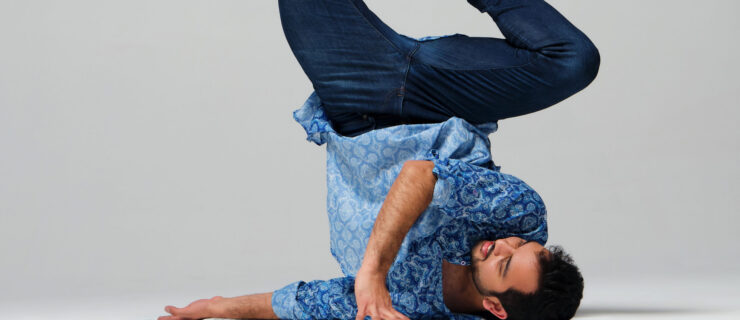Get Hip to Hip Health
There’s a reason why dancers tend to walk like ducks and instinctively flop into a straddle when sitting on the floor: Our hips are conditioned to do things that aren’t anatomically “normal.”
But the hypermobility that helps you achieve sky-high extensions or a 180-degree first position can be a double-edged sword. In the long run, common dancer habits that might help you achieve wow-worthy lines can eventually lead to injuries and pain—but there are strategies that can help keep you safe.
Why Dancers’ Hips Take a Beating
The hip is a ball-and-socket joint that facilitates daily movement, like walking, and provides the stability necessary to bear weight.
The technical demands of dance require “extreme range of motion” in the hips, explains Dr. Stephanie Swensen Buza, assistant attending orthopedic surgeon at the Hospital for Special Surgery and a former ballet dancer. Turnout, for example, is the fundamental framework for many forms of classical dance, and it’s a motion that primarily comes from the hips. You can also thank your hips for any step that’s done on one leg, from tendus and shuffles to développés and tilts.
All of this excessive movement and stress on the joint puts dancers at risk of developing hip issues that range from muscle strain and inflammation to serious injuries that require treatment, like hip impingement, snapping hip syndrome, labral tears and tendinitis, Buza says. A 2017 study found that hip and groin injuries encompass 17 percent of musculoskeletal injuries in dancers.
Fine-Tuning Technique for Healthier Hips

Working from proper technique is the best way to safeguard against injury, Buza says. But balancing healthy anatomical alignment with the aesthetic goals of dance is easier said than done.
For starters, it’s important to understand the relationship of the pelvis to the standing leg, says Carol Teitelbaum, a Feldenkrais practitioner and former member of the Merce Cunningham Dance Company. This connection often needs to remain steady so that the pelvis isn’t pulled away from the standing leg. Even in something as simple as a tendu, it’s natural to want to shift your weight toward the standing leg and “sit into your hip,” says Marika Molnar, physical therapist and founder and president of Westside Dance Physical Therapy. Instead, dancers need to maintain proper alignment of the hip over the ankle, staying lifted on top of their hip, by using their inner thigh muscles, deep rotators of the hip and deep abdominal muscles to keep their pelvis level.
Teitelbaum recommends a simple exercise to engage your gluteal muscles and find stability in your hips: Stand in parallel with your legs relaxed and the front of your pelvis in line with your ankles. Then bring your hands to the soft tissue of one of your thighs and provide a slight inward rotation, against which to activate muscles of the upper leg and buttocks to find external rotation. Repeat this same process, first with the other leg in parallel, and then with each leg in a turned-out first position.
The goal of this is to provide “sensory feedback to the muscles of the upper thigh, which may not know how to make this external rotation movement without doing something with the foot,” Teitelbaum says. You can experiment with maintaining this action with the standing leg as you explore tendus in various directions. While it takes muscular activation to find this support, it will become second nature with practice, she says.
Also don’t force your flexibility. “When you’re stretching, it’s all about moderation,” Buza says. “It’s not supposed to hurt.” Avoid overstretching your hips in splits or foot-in-hand extensions, because that motion will only exacerbate underlying inflammation. “When you are stretching those hip flexors, make sure you’re focusing on the correct muscle group, doing it with the proper technique,” she says.
Cross-Training to Boost Stability and Mobility
Finding other ways to strengthen your body outside of the studio is key to preventing injuries and extending your dance career. Focus on supplemental activities, like Pilates and yoga, that target your core, back and the muscles surrounding your hips, Buza says. Low-impact cardio exercise, like swimming or biking, is also an excellent choice because it builds stamina and endurance in the muscles surrounding the hips, she says.
Tone down the amount of time you spend in turnout: Seek out exercises that you can do in parallel, and avoid sitting with your legs crossed or cross-legged on the floor, Molnar says. Although it might feel counterproductive or strange, she encourages dancers to walk with much less turnout on the street than when they are in the studio. Spending so much time in external rotation messes with your gait and puts undue stress on your feet, ankles and hips.
Continue to be mindful of your posture and alignment throughout the day, whether you’re sitting at a desk or waiting for the subway after class, Buza says. “If you’re doing anything sustained for a long period of time in malalignment, then it’s going to place stress across the joint and increase pain and pressure,” she says.
One Dancer’s Hip Saga
Commercial dancer Derek Piquette, who’s competed on reality TV shows like “So You Think You Can Dance” and “World of Dance,” trained for years with a condition called hip dysplasia, which occurs when the hip socket doesn’t fully cover the ball portion of the upper thigh bone, partially dislocating the hip.
In 2017, in the midst of an international tour with Cirque du Soleil, Piquette’s debilitating pain returned. Doctors and surgeons examined his X-rays and MRIs and told Piquette he’d need a double hip replacement, effectively ending his dance career. “At 21, obviously that was not something I was looking to do,” Piquette, now 25, says.
In retrospect, Piquette can point to a number of habits that probably exacerbated his hip problems. For example, holding tilts for several minutes wearing ankle weights to “build stamina,” stretching forcefully and, in particular, overstretching his splits, he says.
Fortunately, Piquette found an orthopedic surgeon in London who could treat him with the goal of resuming dancing. He had two hip surgeries: one procedure to reattach his left labrum and remove cysts and resurfaced cartilage, and an invasive surgery that required cutting through the pelvis to reorient his left hip in its socket, called a periacetabular osteotomy. (He intends to have both surgeries on his right hip down the line.)

After months of extensive physical therapy, Piquette was back in the studio with lower extensions but a newfound appreciation for his body. Having surgery was “a hard gamble,” he says. “I was like, ‘Well, at this point in my career, I don’t need to lift my leg above 90 degrees.’ ” The surgery didn’t impact his ability to book jobs—his most recent credits include the Christmas Spectacular Starring the Radio City Rockettes and the Apple TV+ show “Schmigadoon!.”
In the end, the surgeries were worth it: “I wouldn’t have changed anything,” Piquette says. “Dance is what I love to do, so I needed to do it.”




